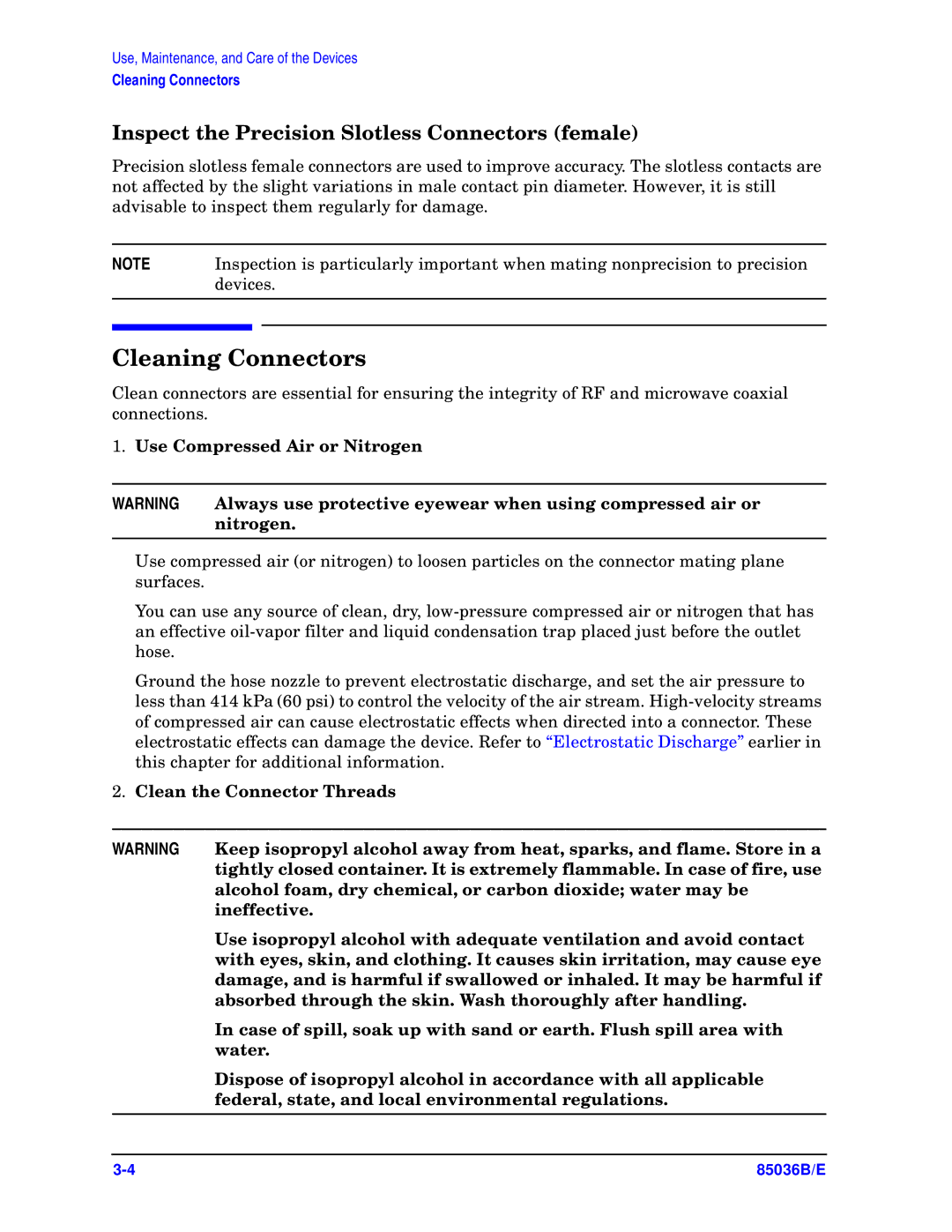
Use, Maintenance, and Care of the Devices
Cleaning Connectors
Inspect the Precision Slotless Connectors (female)
Precision slotless female connectors are used to improve accuracy. The slotless contacts are not affected by the slight variations in male contact pin diameter. However, it is still advisable to inspect them regularly for damage.
NOTE | Inspection is particularly important when mating nonprecision to precision | ||
| devices. | ||
|
|
|
|
|
|
|
|
|
|
|
|
Cleaning Connectors
Clean connectors are essential for ensuring the integrity of RF and microwave coaxial connections.
1.Use Compressed Air or Nitrogen
WARNING Always use protective eyewear when using compressed air or nitrogen.
Use compressed air (or nitrogen) to loosen particles on the connector mating plane surfaces.
You can use any source of clean, dry,
Ground the hose nozzle to prevent electrostatic discharge, and set the air pressure to less than 414 kPa (60 psi) to control the velocity of the air stream.
2.Clean the Connector Threads
WARNING Keep isopropyl alcohol away from heat, sparks, and flame. Store in a tightly closed container. It is extremely flammable. In case of fire, use alcohol foam, dry chemical, or carbon dioxide; water may be ineffective.
Use isopropyl alcohol with adequate ventilation and avoid contact with eyes, skin, and clothing. It causes skin irritation, may cause eye damage, and is harmful if swallowed or inhaled. It may be harmful if absorbed through the skin. Wash thoroughly after handling.
In case of spill, soak up with sand or earth. Flush spill area with water.
Dispose of isopropyl alcohol in accordance with all applicable federal, state, and local environmental regulations.
85036B/E |
